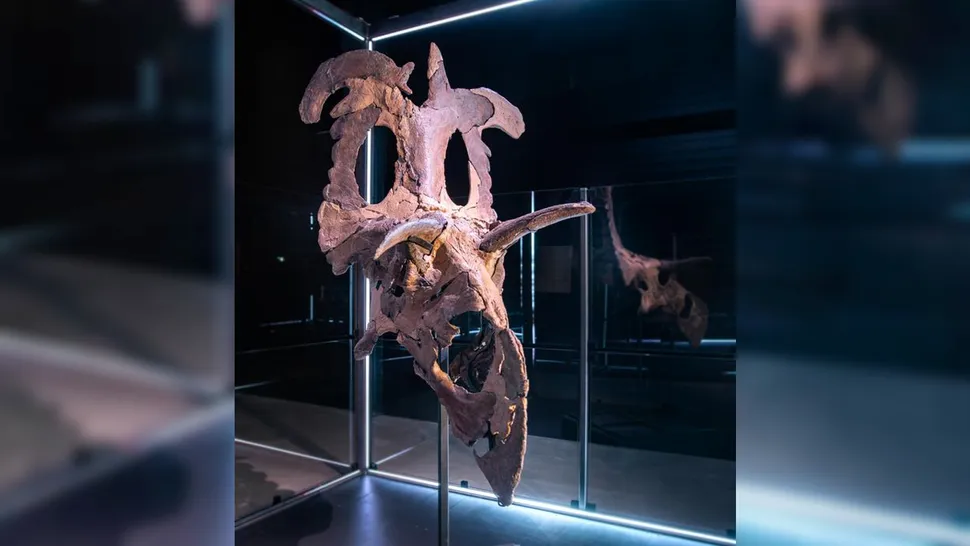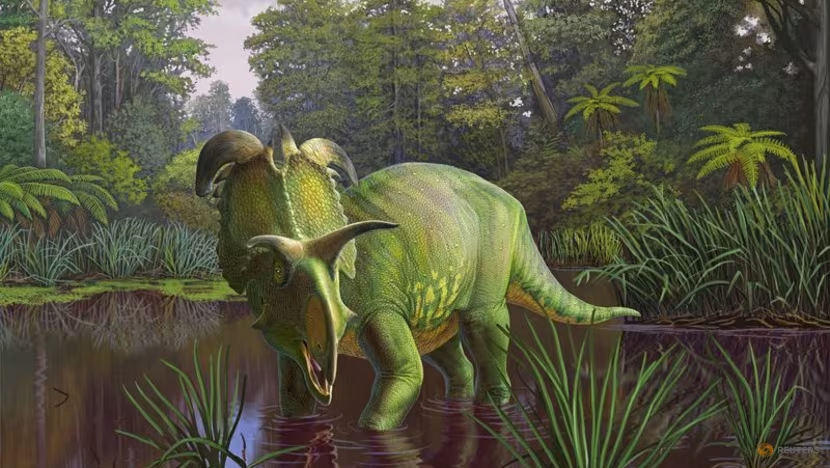A newly discovered dinosaur with elaborate, large horns on its massive head shield has been named after a famous Norse god known for his similar headpiece in recent Marvel movies.
Paleontologists have named this dinosaur Lokiceratops rangiformis, inspired by the Norse god Loki due to the striking resemblance between its horns and the deity’s regal headgear depicted in superhero films and TV shows. The new species was described in a study published on June 20 in the journal PeerJ. Researchers identified the species from partial skull remains unearthed in 2019 at the Judith River Formation in Montana’s Badlands, about 2 miles (3.2 kilometers) from the U.S.-Canada border.

Belonging to the clade Ceratopsia, a group of herbivorous horned dinosaurs including Triceratops, Lokiceratops is distinguished by its large bony head plates or frills and prominent horns. This particular species, likely around 22 feet (6.7 meters) long and weighing 5.5 tons (5 metric tons), features headgear that pushes the boundaries of ceratopsian ornamentation to new extremes.
L. rangiformis had a massive frill adorned with a pair of flattened, curvy horns at the top, in addition to the standard lance-like horns above its eyes. These frill horns are the largest ever seen in any ceratopsian. The unique headgear inspired the genus name Lokiceratops in honor of Loki, often depicted wearing a helmet with similarly ornate horns in modern Marvel portrayals.
Additionally, the species name rangiformis, meaning “looks like caribou” in Latin, reflects a third pair of asymmetrical horns on the top of its frill, resembling caribou antlers which are longer on one side. Notably, Lokiceratops’ skull lacks a nose horn, a common feature among other ceratopsians like Triceratops.
L. rangiformis lived around 78 million years ago during the Cretaceous period, about 12 million years before Triceratops emerged. During this time, North America was a large island continent known as Laramidia. Lokiceratops likely inhabited swamps and floodplains along Laramidia’s east coast.

Previously, researchers believed that only a few horned dinosaur species co-existed on Laramidia at any one time due to competition for resources. However, Lokiceratops is now the fourth ceratopsian—and fifth horned dinosaur—identified from the same period in Laramidia’s history, suggesting greater diversity among this group than previously thought. Two other ceratopsians were also found in the Judith River Formation, indicating they co-existed relatively harmoniously.
“The skull of Lokiceratops is dramatically different from the other four animals it lived alongside,” said Mark Loewen, study co-lead author and paleontologist at the University of Utah. High levels of ceratopsian biodiversity likely led to increased competition for resources, resulting in sexual selection favoring large horns, Loewen added.
Scientists believe the frills and horns of ceratopsians were primarily used to attract potential mates, much like the elaborate feathers of birds. The size of L. rangiformis’ horns was likely an indicator of individual success, with larger horns being more desirable.
